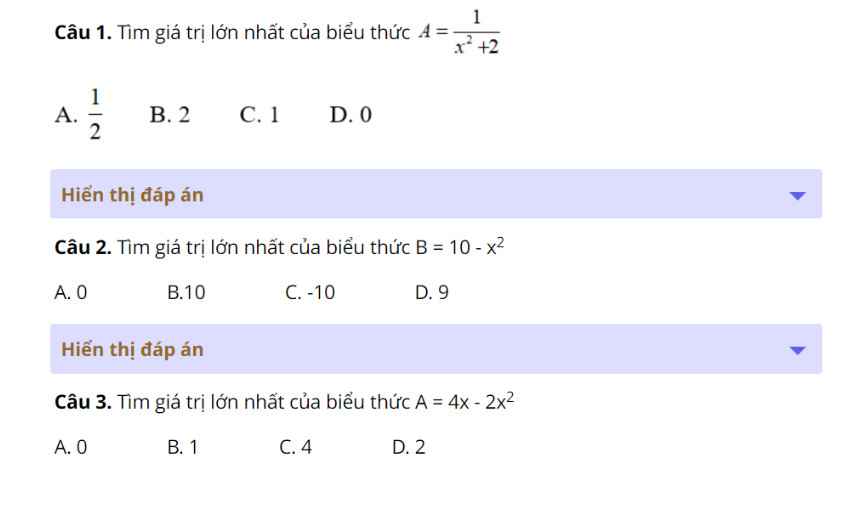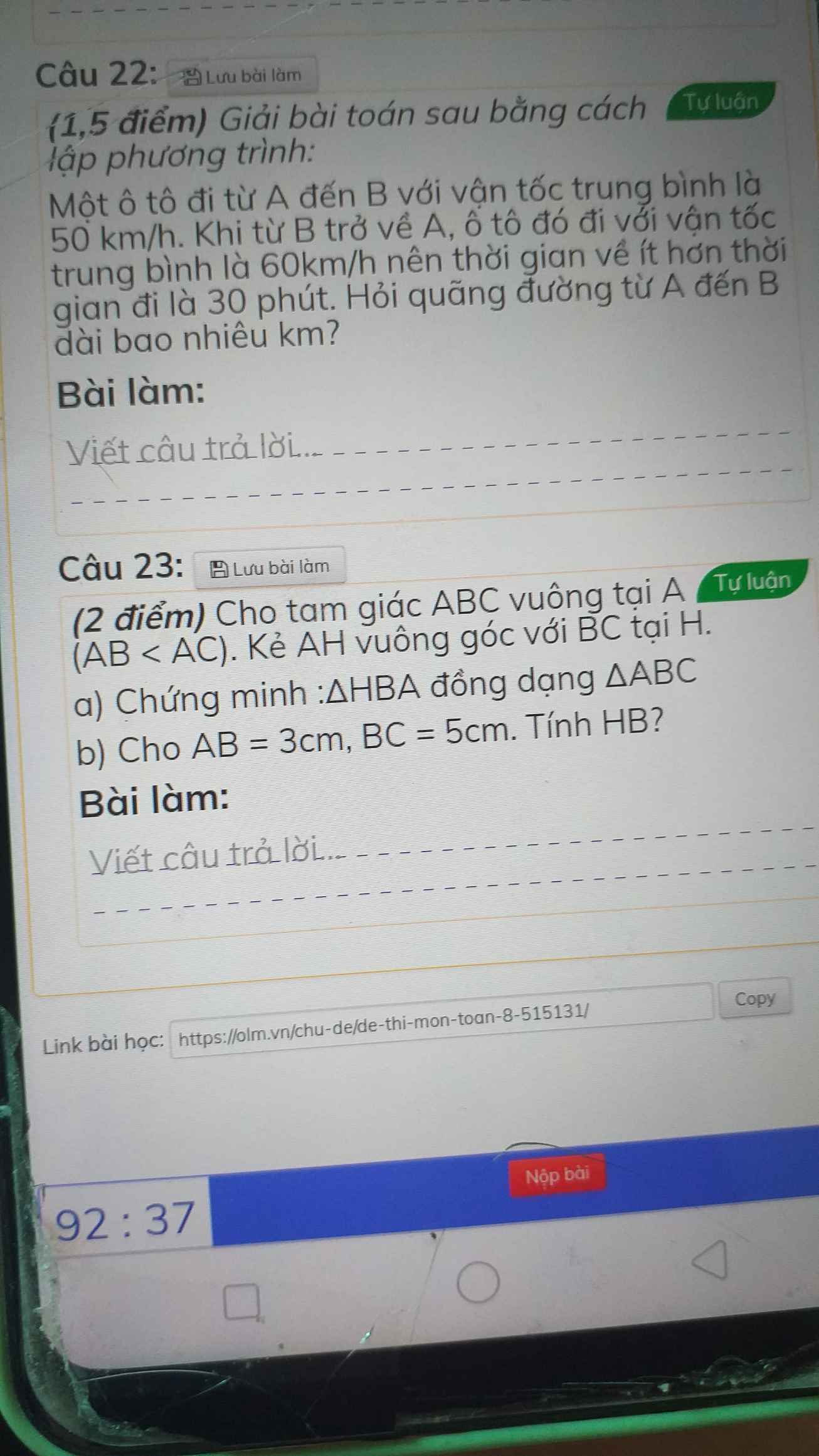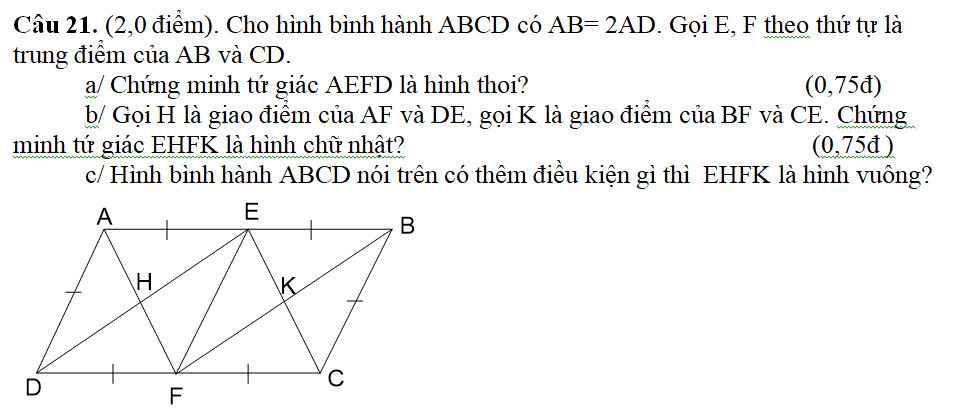\(a,DKXD:x\ne0;3\)
\(b,\) Thay \(x=3\) vào P \(\Leftrightarrow\dfrac{2.3+3}{3\left(3-3\right)}+\dfrac{1}{3}\)
\(\Leftrightarrow P=\dfrac{1}{3}\)
Vậy \(P=\dfrac{1}{3}\) khi \(x=3\)
\(c,\) Thay \(P=\dfrac{1}{2}\) vào bểu thức
\(\Leftrightarrow\dfrac{1}{2}=\dfrac{2x+3}{x\left(x-3\right)}+\dfrac{1}{x}\)
\(\Leftrightarrow\dfrac{2x+3+x-3}{x\left(x-3\right)}-\dfrac{1}{2}=0\)
\(\Leftrightarrow\dfrac{2x+3+x-3-x^2+3x}{2x\left(x-3\right)}=0\)
\(\Leftrightarrow-x^2=0\Leftrightarrow x=0\)
Vậy \(x=0\) để \(P=\dfrac{1}{2}\)

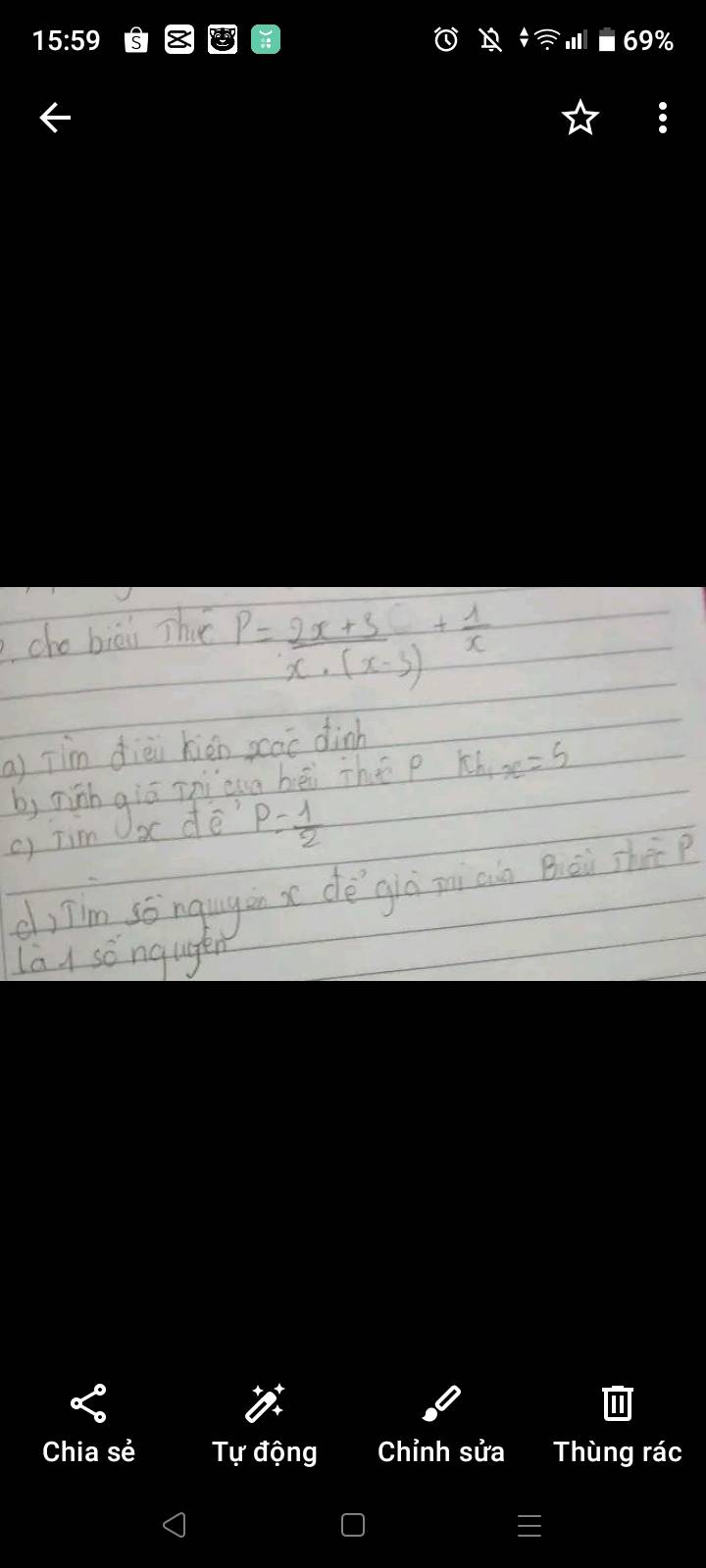




 ai giải giúp em mấy bài toán này vs ạ giải chi tiết giúp em ạ
ai giải giúp em mấy bài toán này vs ạ giải chi tiết giúp em ạ ai giải giùm em câu 6 vs ạ cho em lời giải chi tiết và vẽ hình giúp em vs ạ cảm ơn mn
ai giải giùm em câu 6 vs ạ cho em lời giải chi tiết và vẽ hình giúp em vs ạ cảm ơn mn
 giúp em bài này vs ạ em cảm ơn trc ạ
giúp em bài này vs ạ em cảm ơn trc ạ
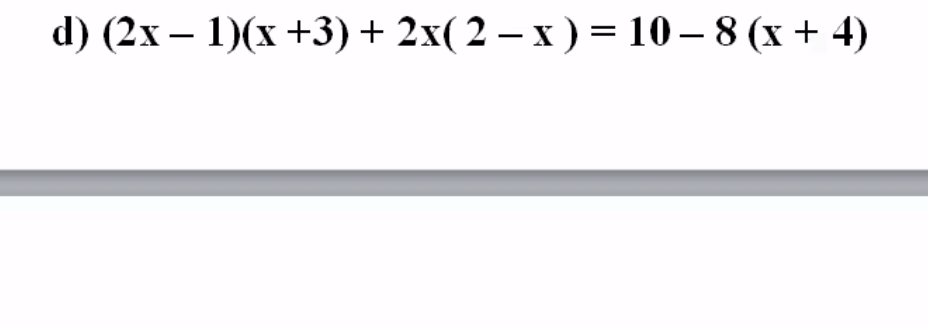 Giúp em vs ạ ! Em camon.
Giúp em vs ạ ! Em camon. 

